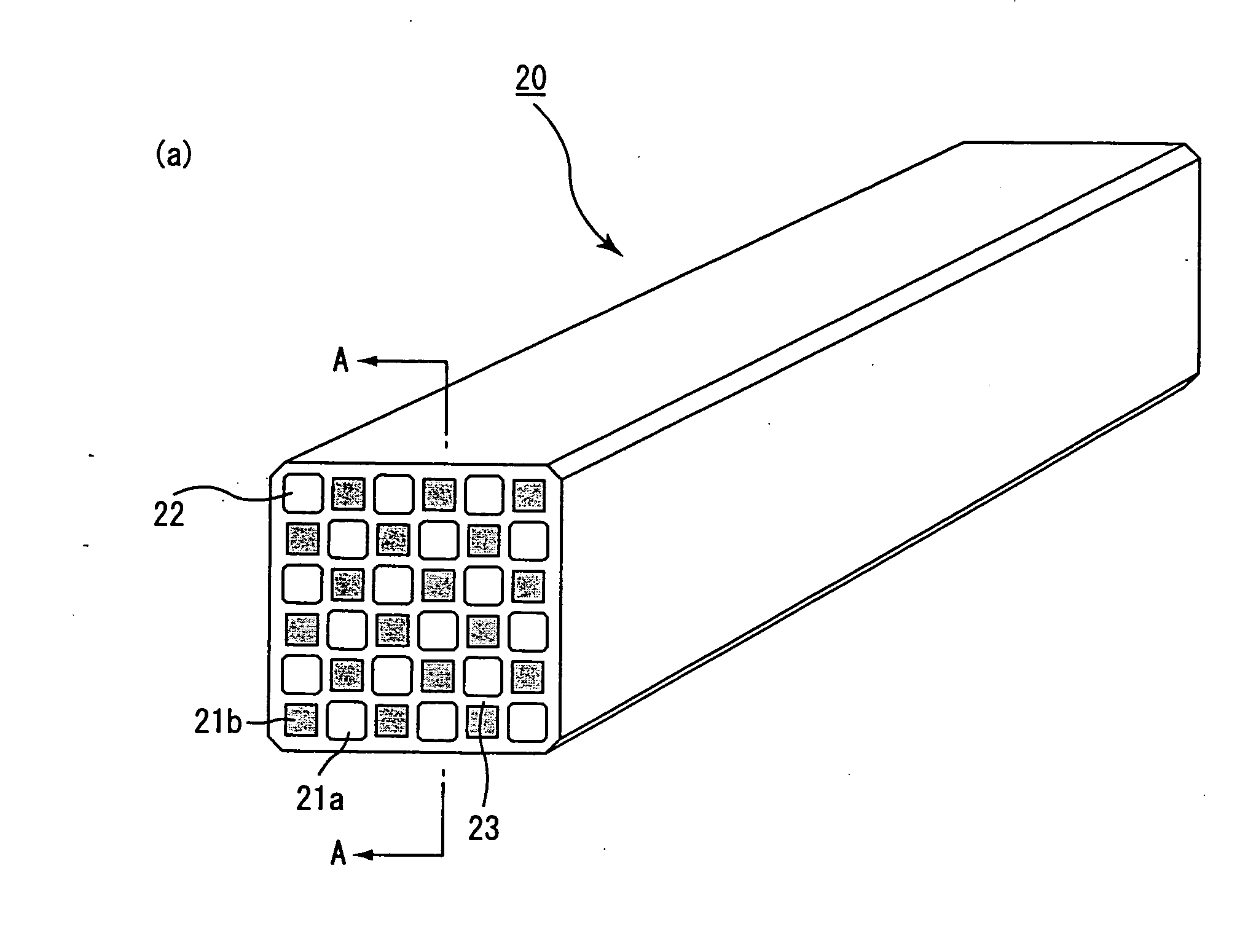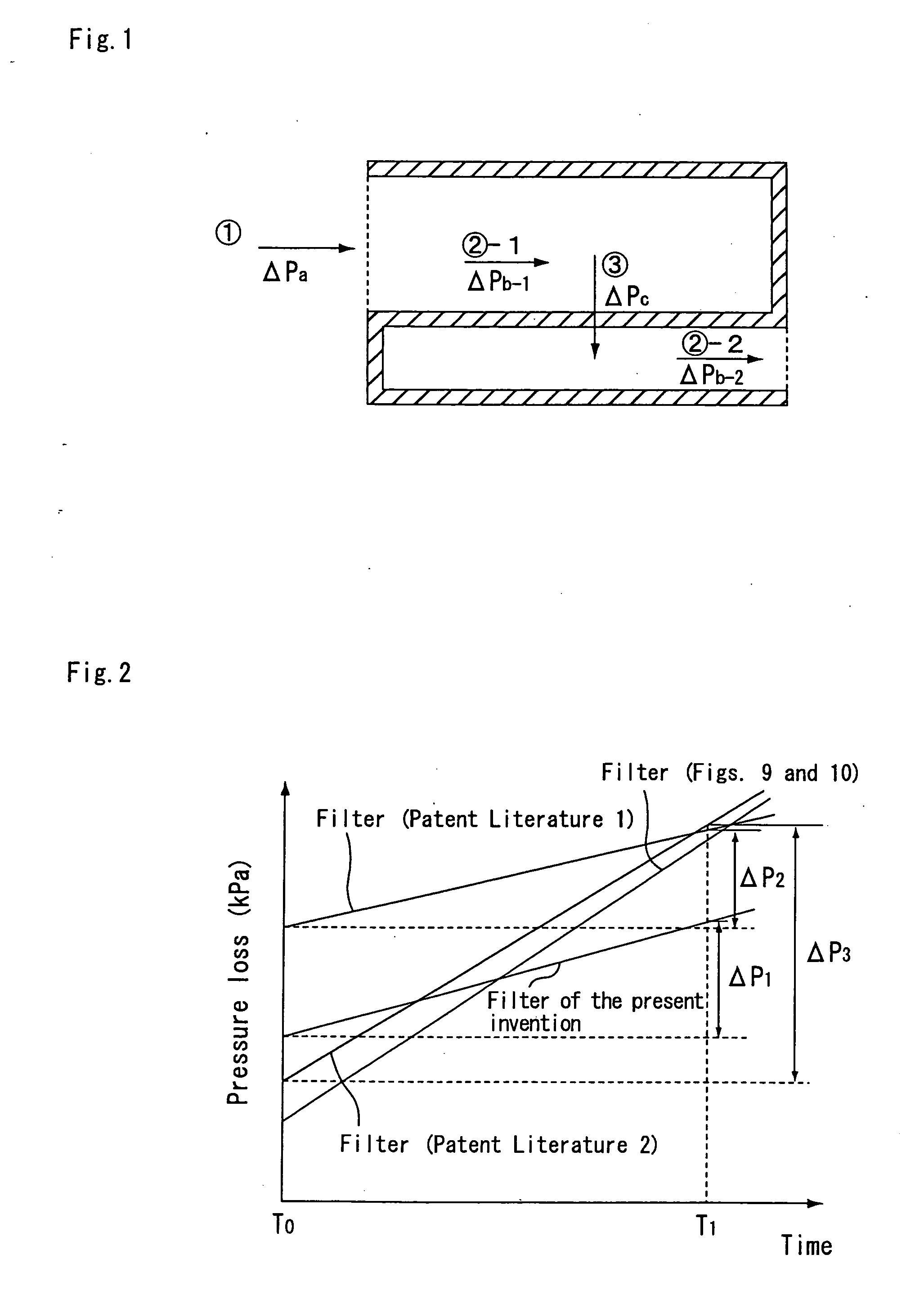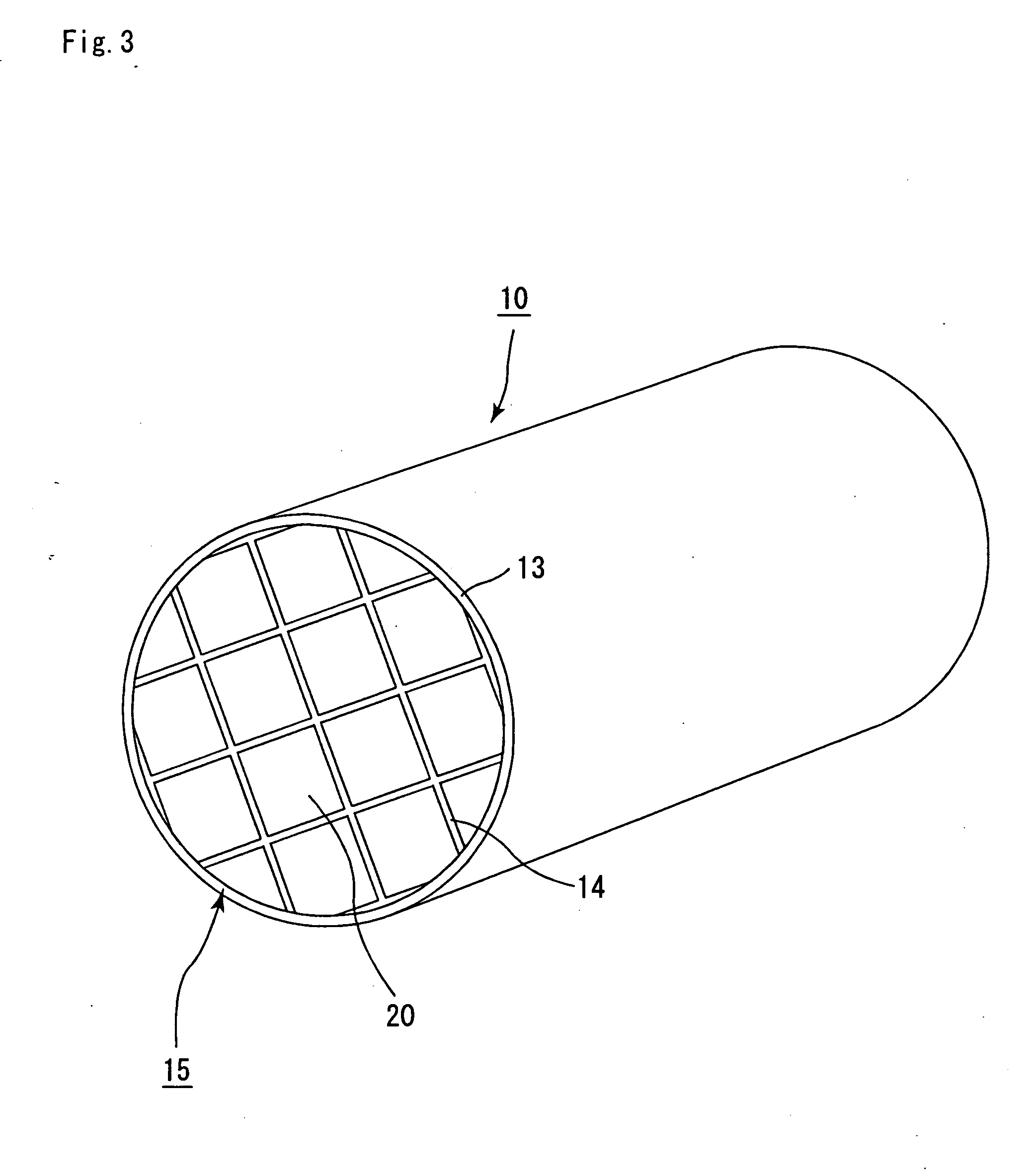Filter
a filter and filter body technology, applied in the field of filters, can solve the problems of increased pressure loss of filters, serious problems, contamination of the environment and human body, etc., and achieve the effect of increasing the capacity of the collecting portion of filters and low pressure loss
- Summary
- Abstract
- Description
- Claims
- Application Information
AI Technical Summary
Benefits of technology
Problems solved by technology
Method used
Image
Examples
example 1
[0200] (1) Powder of α-type silicon carbide having an average particle size of 11 μm (60% by weight) and powder of β-type silicon carbide having an average particle size of 0.5 μm (40% by weight) were wet-mixed, and to loop arts by weight of the resulting mixture were added and kneaded 5 parts by weight of an organic binder (methyl cellulose) and 10 parts by weight of water to obtain a mixed composition. Next, after a slight amount of a plasticizer and a lubricant have been added and kneaded therein, the resulting mixture was extrusion-molded, so that a raw molded body, which had an octagonal cross-sectional shape in the large-capacity through hole and an quadrangle cross-sectional shape (substantially square shape) in the small-capacity through hole, with β (aperture ratio) after the sintering process being set to 1.50, was manufactured as shown in FIGS. 6(a) to 6(d).
[0201] Next, the above-mentioned raw molded body was dried by using a micro-wave drier or the like to form a cerami...
PUM
| Property | Measurement | Unit |
|---|---|---|
| porosity | aaaaa | aaaaa |
| porosity | aaaaa | aaaaa |
| porosity | aaaaa | aaaaa |
Abstract
Description
Claims
Application Information
 Login to View More
Login to View More - R&D
- Intellectual Property
- Life Sciences
- Materials
- Tech Scout
- Unparalleled Data Quality
- Higher Quality Content
- 60% Fewer Hallucinations
Browse by: Latest US Patents, China's latest patents, Technical Efficacy Thesaurus, Application Domain, Technology Topic, Popular Technical Reports.
© 2025 PatSnap. All rights reserved.Legal|Privacy policy|Modern Slavery Act Transparency Statement|Sitemap|About US| Contact US: help@patsnap.com



